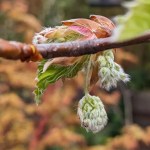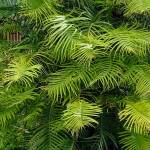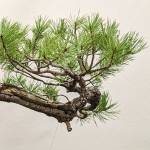The first point to make in explaining how trees grow, is to highlight that plants and animals diverged when both were just single cells, and have a completely different lifestyle, since animals are mobile, and plants are ‘sessile’ (immobileref). This means the mechanisms they have evolved to grow, survive and reproduce in their environments have done so completely separately and independently. So even though some aspects of plant growth may appear similar to animals, particularly at the cellular level, in reality they are completely and utterly different.
For example, while both organisms reproduce sexually, creating diploid zygotes (embryos containing two copies of genetic material, one from each parent), they do so in very different ways. In trees, pollen and ovules are actually genetically distinct from the parent plant – in effect they are the next generation (the gametophyte generation).ref In angiosperms (flowering plants), two fertilization events occur – one to create the zygote which becomes the seed and ultimately the embryo, and one to create the endosperm or fruit.ref In gymnosperms the embryo is not contained within an endosperm/fruit.
However, once an embryo is formed from a seed, plants have an important difference from animals because they possess ‘plastic development’ref – which means that they can change the types of cells they produce at any given time. Plants have areas of stem cells which develop into different organs – such as roots, shoots, leaves, strobili and flowers.
You may have heard of stem cells before – these are “precursor cells that have the capacity to self-renew and to generate multiple mature cell types.”ref This means they can become any type of cell. In humans, stem cells are present in embryos, but in adults they only exist as specialised stem cells which can make specific other types of cells.ref In trees, the places where stem cells are located are called the ‘meristems’. Meristems are found in shoots, roots, and there are two underneath the bark – one on the outside of the woody stem (the vascular cambium) and one just outside that (the cork cambium).ref
The shoot apical meristem (‘SAM’) is the growing tip at the end of a shoot which “generates above-ground aerial organs”ref. Similarly, the root apical meristem (‘RAM’) has the same function below-ground. Both the SAM and the RAM generate more stem cells as well as the plant organs, to enable continued growth. This kind of growth is called ‘primary’ growth, which results in buds, shoots, leaves, flowers (from the SAM) and roots (from the RAM).
These organs themselves go through developmental stages, so it is also believed for example that “leaves maintain their own meristems, and that the tightly controlled activity of these meristems directs the complex process of leaf tissue development.”ref
Another type of meristem is the vascular cambium – a layer of living tissue between the bark and the wood of the trunk. The role of this meristem is to create xylem cells on the inside of the layer and phloem cells on the outside (read more about xylem & phloem). This is known as ‘secondary’ growth. The xylem tissues which are created every year become the rings of wood in the trunk, and the phloem tissues become the inner bark. As xylem & phloem is either constantly or periodically being regenerated, the effect of this is to thicken the trunk. Outside this layer is another meristem called the cork cambium which creates the outer bark and cork layer.
So the growth of a tree depends on the meristems which create tissues and organs that enlarge the above-ground and below-ground biomass (primary growth) and widen the tree (secondary growth). If a tree loses a leaf/branch/root – it doesn’t try to repair the damage, it just grows a new one!
A big question then is – how do the meristems know what to produce, where and when? And how do they balance their production between creating more stem cells and creating more plant organ cells? This is the subject of many research studies which mostly acknowledge these is still a lot to learn. Some of the main factors are genes, plant growth regulators and the environment – the same mechanisms which determine growth patterns in us as well.
Trees have a ‘phenology’, which means they follow a lifecycle, which is genetically and environmentally determined. Learn more about this in Tree Phenology (or Seasonal Cycles).
See all posts in the How Trees Grow category here, or check out the latest posts below:










